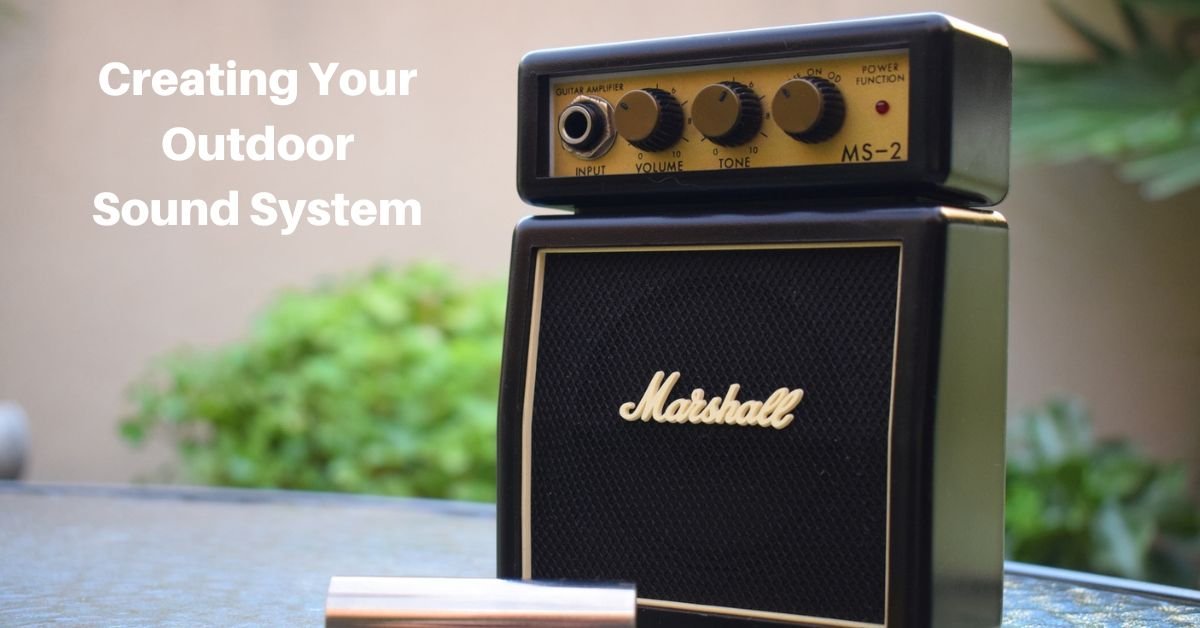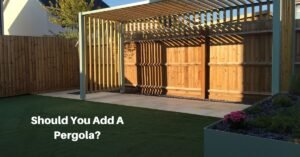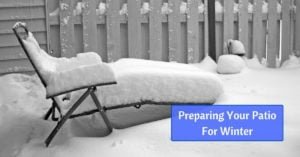Enhancing your outdoor living space with a sound system can transform simple gatherings into memorable events and turn patios, gardens, or any outdoor area into an immersive entertainment zone. Whether you want to enjoy background music, host movie nights under the stars, or energize outdoor parties with vibrant sound, an outdoor sound system requires thoughtful planning and consideration of several vital factors.
Planning Your Outdoor Sound System
The first step in creating an exceptional outdoor audio experience is to define the purpose of your sound system. Understanding your intended use will guide your decisions on the type of system, number of speakers, and overall power needed.
Assessing your outdoor space is crucial for determining the optimal layout for speaker placement. Consider the area’s size, any obstacles that could interfere with sound, and how sound may travel beyond your intended listening area.
The choice between wired and wireless systems is also significant. Wired systems typically offer superior sound quality and reliability, but wireless options provide easy installation and flexibility.
Selecting the Right Equipment
Selecting the right equipment is pivotal to achieving a high-quality sound that complements your outdoor setting. Look for outdoor speakers designed with weather-resistant materials capable of withstanding exposure to sun, rain, and temperature variations without compromising sound quality. Choose speakers based on durability and audio performance, ensuring they can deliver clear and full sound across your yard.
When choosing amplifiers and receivers, opt for models specifically designed for outdoor use or those that can be adequately protected from outdoor conditions. These components should have enough power to drive your speakers efficiently and provide clear, undistorted sound at your desired volume levels.
Incorporating subwoofers and specialized outdoor AV equipment can further enhance your sound system. Subwoofers reproduce low-frequency sounds, adding depth to the music. Other outdoor AV components can seamlessly integrate with entertainment elements like outdoor projectors or screens.
Installation Tips and Techniques
Installing wired systems involves careful planning to run cables from your audio source to the speakers. This often requires trenches or protective conduits to hide and protect wires. Position speakers strategically to ensure even sound coverage throughout your space, considering height and direction for the best listening experience.
Wireless systems are easier to set up but still require thoughtful placement to maximize sound quality and ensure a stable connection. Consider the range of your wireless network and any potential interference from obstacles or other wireless devices.
Optimizing Wired and Wireless Connections
After selecting the right equipment for your outdoor sound system, it is crucial to ensure optimal performance through effective wired and wireless connections. This means understanding the best practices for cable lengths and materials and maximizing the efficiency of wireless systems.
Wired Connections: Lengths and Materials
- Optimal Cable Lengths: Keeping cable runs as short as possible for wired outdoor sound systems ensures minimal signal loss and superior sound quality. Ideally, speaker cables should be no more than 100 feet (30 meters) in length. Beyond this distance, consider using a line-level signal booster or an additional amplifier to maintain audio fidelity.
- Cable Materials and Connectors: The quality of materials used in cables and connectors significantly impacts sound quality. Oxygen-free copper (OFC) cables are widely recommended for their low resistance and minimal signal degradation over distance. As for connectors, gold-plated options are often touted for their resistance to corrosion and superior connection quality. While the actual sound quality improvement may be minimal for casual listeners, gold connectors can ensure a more reliable and long-lasting connection, especially in outdoor environments where moisture and humidity are concerns.
Wireless Systems: Range and Signal Boosting
- Wireless Range: The effective range of wireless outdoor sound systems varies depending on the technology such as Bluetooth or Wi-Fi. Environmental factors such as obstacles and interference from other devices also play a huge role.
Bluetooth systems typically have a range of up to 30 feet (9 meters). Wi-Fi-based systems can extend up to 150 feet (45 meters) or more under optimal conditions.
- Boosting Wireless Signals: To enhance the range and stability of wireless connections in outdoor settings, consider using wireless range extenders or mesh network systems. These devices can help amplify the signal to ensure consistent coverage across larger outdoor areas. They also minimize dropouts.
Placement is key. Strategically locate extenders or mesh nodes to bridge the gap between your audio source and outdoor speakers, avoiding physical obstructions and interference sources as much as possible.
Incorporating these considerations into your outdoor sound system setup can significantly enhance your listening experience. Whether you opt for a wired or wireless setup, understanding and applying these principles will ensure your system delivers clear, uninterrupted sound to every corner of your outdoor space.
Protecting and Managing Outdoor Wiring
Protecting and managing the wiring is crucial for safety and aesthetics if you choose a wired system. Adequately secured and protected wires ensure the longevity of your system and prevent potential hazards. They also keep your outdoor space looking neat and uncluttered. Here are some supplies and techniques to achieve this:
Supplies Needed for Wire Protection
Conduit: Using PVC conduit or specially designed outdoor cable conduit can protect wires from physical damage and exposure to the elements. Conduit is essential for runs that cross under pathways or through garden areas where wires might be disturbed.
Wire Clamps and Cable Ties are ideal for securing wires along walls or fence lines. Look for UV-resistant cable ties for outdoor use to ensure they don’t degrade under sun exposure.
Cable Staples: For attaching wires directly to wooden surfaces, use cable staples that are wide enough to hold the cable without piercing or pinching it, which could damage the insulation or the wire itself.
Burial-rated Cables: If wires need to be run underground, use burial-rated cables designed to withstand moisture and soil conditions without degrading.
Techniques for Wire Management and Protection
Plan wire routes along edges and corners where they can be easily concealed and protected. Avoid high-traffic areas to minimize the risk of damage.
Burying wires that must cross open areas is a safe and effective solution. For low-voltage wires, dig a trench at least 6 inches (15 cm) deep and lay the wire within a protective conduit before covering it back up. This depth keeps the wires safe from most gardening activities. Still, mark the location of buried wires for future reference.
If burying wires isn’t practical, consider elevating them using existing structures or installing wire supports, especially where they cross walkways. This will prevent tripping hazards and protect the wires from wear and tear.
Finally, design your wiring layout with maintenance in mind. Include access points or junction boxes at strategic locations to facilitate future repairs or expansions without disturbing the entire system.
Using these supplies and techniques, you can ensure the wiring of your outdoor sound system is safe and unobtrusive. Even with a wired system, you can maintain the beauty of your outdoor space while protecting your investment in quality sound!
Optimizing Sound Quality in Outdoor Environments
Outdoor environments present unique challenges for sound quality, including noise interference from external sources and sound dispersion in open spaces. Overcoming these challenges requires strategic planning. Here are a few of the more pressing points:
- Speaker Placement: Position speakers to direct sound towards the primary listening area and use multiple speakers spaced evenly to ensure consistent coverage without increasing the volume excessively.
- Use of Acoustic Accessories: Consider utilizing acoustic accessories designed for outdoor use, such as weather-resistant stands or mounts, to optimize the angle and height of your speakers for better sound projection.
- Balancing Sound: Balancing sound levels across different zones can create a more immersive and enjoyable listening experience for larger areas or complex layouts. This may involve adjusting volume controls on individual speakers or using a multi-zone amplifier.
Creating an immersive soundscape in your outdoor space enhances the listening experience and minimizes noise spillage into neighboring areas. This is key to maintaining a harmonious relationship with your neighbors!
Maintenance and Upkeep
Regular maintenance and seasonal care are essential to ensure your outdoor sound system continues to perform at its best. Be sure to keep up with these needs:
- Routine Cleaning: Regularly clean speaker housings. Remove any debris or dust that may accumulate and potentially hinder performance. Follow the manufacturer’s instructions for cleaning and maintenance.
- Weather Protection: Outdoor speakers are designed to withstand the elements. However, taking additional steps to protect your equipment during extreme weather conditions or when not in use can extend its lifespan. Consider using protective covers or moving portable components indoors when bad weather is expected.
- System Check-ups: Periodically check all components of your sound system, especially wiring and connections, for signs of wear or damage, and address any issues promptly to prevent system failure.
A proactive approach to caring for your outdoor sound system will allow you to enjoy high-quality sound for many years, making your outdoor space a perennial favorite for family and friends.
Installing an outdoor sound system is a rewarding project that can significantly enhance the enjoyment of your outdoor spaces. From selecting the right equipment to optimizing sound quality and maintaining the system, each step contributes to creating an ambient or lively outdoor atmosphere tailored to your preferences.
Careful planning and installation will help you customize your garden, patio, or backyard into an engaging and inviting entertainment area. With the right approach, your outdoor sound system will provide the soundtrack to your outdoor living, making it a more integral part of your home’s charm and appeal.









